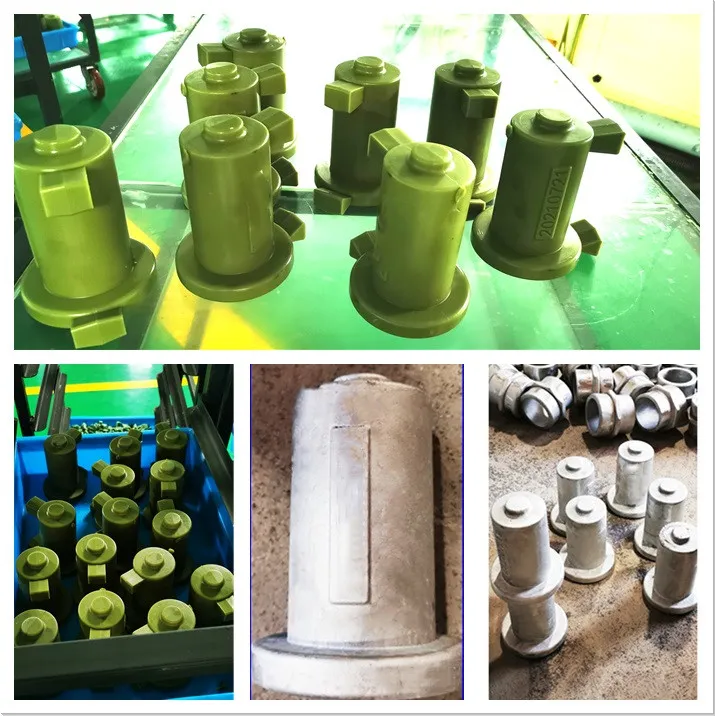Mobile:+86-311-808-126-83
Email:info@ydcastings.com
semi impeller
Understanding Semi-Impellers A Key Component in Fluid Dynamics
In the world of fluid dynamics, the efficiency and functionality of pumps and turbines are critical for a wide range of applications. One of the essential components that greatly influence these machines’ performance is the semi-impeller. A semi-impeller integrates the principles of traditional impeller designs while introducing innovative features that enhance fluid flow and energy transfer. This article explores the characteristics, advantages, and applications of semi-impellers.
What is a Semi-Impeller?
A semi-impeller is a type of impeller that combines elements of both open and closed impeller designs. Unlike a fully closed impeller, which typically has a shroud or casing on both sides, a semi-impeller has one side open. This design allows for a more efficient flow of fluid while minimizing turbulence and cavitation—common issues in pumping systems. The open side facilitates easier maintenance, as it allows for better access to the impeller components.
Characteristics of Semi-Impellers
1. Design Efficiency Semi-impellers are engineered to optimize flow characteristics, allowing for smoother fluid passage. This results in improved hydraulic efficiency and increases the overall performance of the pump or turbine.
2. Reduced Turbulence The open design of semi-impellers helps mitigate turbulence, which can negatively impact the energy transfer efficiency. By smoothing out the flow, semi-impellers contribute to decreased wear and tear on the system, thereby extending equipment lifespan.
3. Versatility Semi-impellers can be utilized in various applications, including wastewater treatment, chemical processing, and even in some hydraulic systems. Their versatility makes them suitable for both low and high viscosity fluids.
Advantages of Semi-Impellers
semi impeller

- Maintenance-Friendly The design of semi-impellers simplifies the maintenance process. With easy access to the impeller, routine inspections and repairs can be conducted with less downtime, thus improving operational efficiency.
- Improved Energy Efficiency The enhanced flow dynamics of semi-impellers contribute to reduced energy consumption in pumping systems. Lower energy requirements translate into cost savings over time, making semi-impellers a cost-effective choice for many industries.
- Enhanced Performance Semi-impellers often achieve superior performance in terms of pumping head and flow rate when compared to traditional designs. This performance improvement is particularly beneficial in applications requiring high flow rates and minimal pressure drops.
Applications of Semi-Impellers
Semi-impellers are widely used in various sectors, including
- Water and Wastewater Treatment They play a crucial role in pumping systems that handle large volumes of water and sewage, aiding in efficient processing and treatment.
- Chemical Processing In the chemical industry, semi-impellers facilitate the transfer of corrosive and viscous fluids, ensuring effective mixing and displacement.
- Industrial Manufacturing Many manufacturing processes involve the movement of fluids, and semi-impellers are integrated into systems to enhance the efficiency of these operations.
In conclusion, semi-impellers are a significant advancement in the field of fluid dynamics, offering benefits such as improved efficiency, easier maintenance, and versatility across various applications. As industries continue to seek ways to optimize their operations, the role of semi-impellers will only grow in importance, making them a key focus for engineers and manufacturers alike.
-
Why Should You Invest in Superior Pump Castings for Your Equipment?NewsJun.09,2025
-
Unlock Performance Potential with Stainless Impellers and Aluminum End CapsNewsJun.09,2025
-
Revolutionize Your Machinery with Superior Cast Iron and Aluminum ComponentsNewsJun.09,2025
-
Revolutionize Fluid Dynamics with Premium Pump ComponentsNewsJun.09,2025
-
Optimizing Industrial Systems with Essential Valve ComponentsNewsJun.09,2025
-
Elevate Grid Efficiency with High-Precision Power CastingsNewsJun.09,2025











